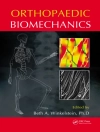Hallucinatory phenomena have held the fascination of science since the dawn of medicine, and the popular imagination from the beginning of recorded history. Their study has become a critical aspect of our knowledge of the brain, making significant strides in recent years with advances in neuroimaging, and has established common ground among what normally are regarded as disparate fields. The Neuroscience of Hallucinations synthesizes the most up-to-date findings on these intriguing auditory, visual, olfactory, gustatory, and somatosensory experiences, from their molecular origins to their cognitive expression. In recognition of the wide audience for this information among the neuroscientific, medical, and psychology communities, its editors bring a mature evidence base to highly subjective experience. This knowledge is presented in comprehensive detail as leading researchers across the disciplines ground readers in the basics, offer current cognitive, neurobiological, and computational models of hallucinations, analyze the latest neuroimaging technologies, and discuss emerging interventions, including neuromodulation therapies, new antipsychotic drugs, and integrative programs. Among the topics covered: Hallucinations in the healthy individual. A pathophysiology of transdiagnostic hallucinations including computational and connectivity modeling. Molecular mechanisms of hallucinogenic drugs. Structural and functional variations in the hallucinatory brain in schizophrenia. The neurodevelopment of hallucinations. Innovations in brain stimulation techniques and imaging-guided therapy. Psychiatrists, neurologists, neuropsychologists, cognitive neuroscientists, clinical psychologists, and pharmacologists will welcome The Neuroscience of Hallucinations as a vital guide to the current state and promising future of their shared field.
قائمة المحتويات
Part I: The Basics of Hallucinations.- 1. An epistemological approach: history of concepts and ideas about hallucinations.- 2. Hallucinatory experiences in non-clinical populations.- 3. Hallucinations and other sensory deceptions in psychiatric disorders.- 4. Hallucinations associated with neurological disorders and sensory loss.- 5. Standardized assessment of hallucinations.- Part II: Cognitive Models of Hallucinations.- 6. The ‘bottom-up’ and ‘top-down’ components of the hallucinatory phenomenon.- 7. Speech processing and auditory verbal hallucinations.- 8. The role of memory retrieval and emotional salience in the emergence of hallucinations.- 9. Misattribution models (I): meta-cognitive believes and hallucinations.- 10. Misattributions models (II): source monitoring in hallucinating schizophrenia subjects.- 11. Time perception and discrimination in individuals suffering from hallucinations.- Part III: Neurobiological and Computational Models of Hallucinations.- 12. A neurodevelopmental perspective on hallucinations.- 13. Candidate genes involved in the expression of psychotic symptoms: a focus on hallucinations.- 14. Animal models and hallucinogenic drugs.- 15. Cannabis and hallucinations: studies in human subjects.- 16. Computational models of hallucinations.- Part IV: Brain-Imaging Insight into Hallucinations.- 17. Electrophysiological exploration of hallucinations (EEG, MEG).- 18. Structural imaging of the ‘hallucinating’ brain in schizophrenia.- 19. Functional brain imaging of auditory hallucinations: from self-monitoring deficits to co-opted neural resources.- 20. Functional brain imaging of hallucinations: symptom capture studies.- 21. Brain functioning when the voices are silent: aberrant default-mode in auditory verbal hallucinations.- 22. Connectivity issues of the ‘hallucinating’ brain.- Part V: Innovative Therapeutic Approaches of Hallucinations.- 23. Beyond monotherapy: the HIT-story.- 24. The psychopharmacology of hallucinations: ironic insights into mechanisms of action.- 25. Neuromodulation techniques to treat hallucinations.- 26. The future of brain stimulation to treat hallucinations.- 27. Perspectives in brain-imaging and computer-assisted technologies for the treatment of hallucinations.- Conclusion: Key-issues for future research in the neuroscience of hallucinations.
عن المؤلف
Renaud Jardri, M.D., Ph.D., is a child psychiatrist at the Lille University Medical Centre, France and associate faculty at the Group for Neural Theory, École Normale Supérieure, Paris, France.
Arnaud Cachia, Ph.D., is Associate Professor in Neurosciences at Université Paris Descartes, affiliated with the Center for Psychiatry and Neurosciences (INSERM, Ste-Anne Hospital) and the Laboratory for the Psychology of Child Development and Education (CNRS, Sorbonne).
Pierre Thomas, M.D., Ph.D., is Professor of Psychiatry at the Lille North of France University School of Medicine and Co-Research Director of the “Hallucinations & Delusions” team in the Functional Neuroscience and Disorders Laboratory (Lille, France).
Delphine Pins, Ph.D., is a CNRS researcher at the Functional Neurosciences and Disorders Laboratory (Lille, France), where she is Co-Research Director of the “Hallucinations & Delusions” team.












